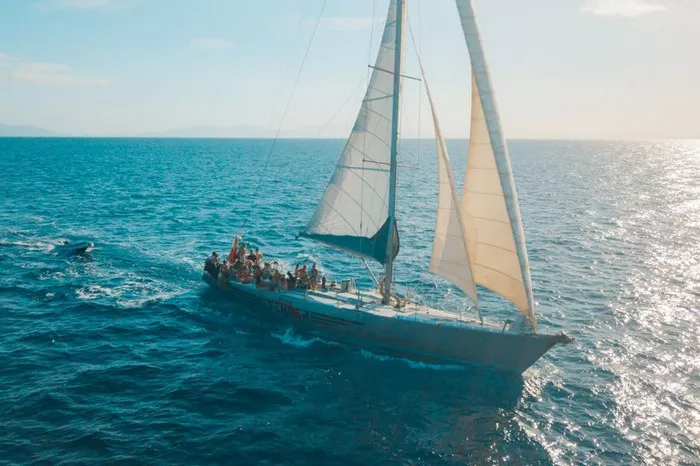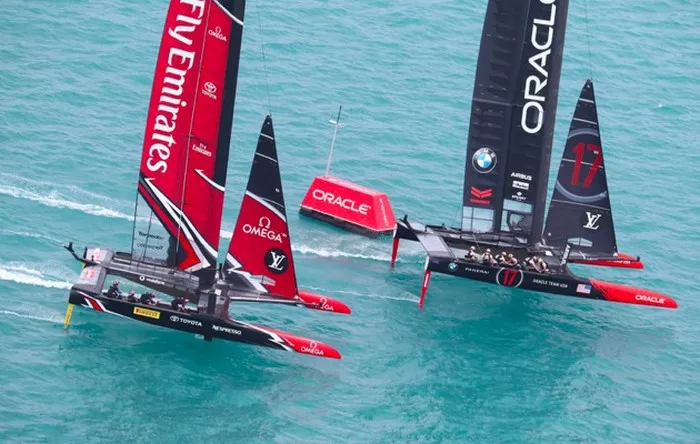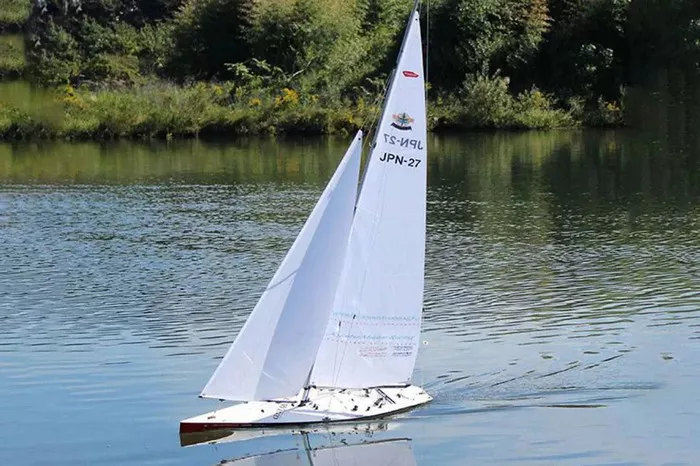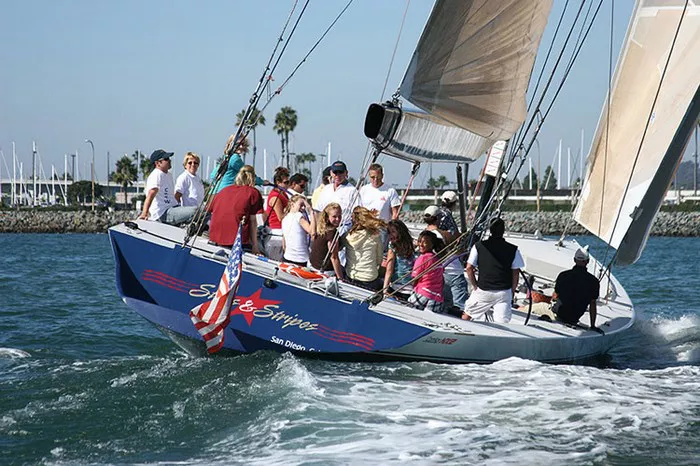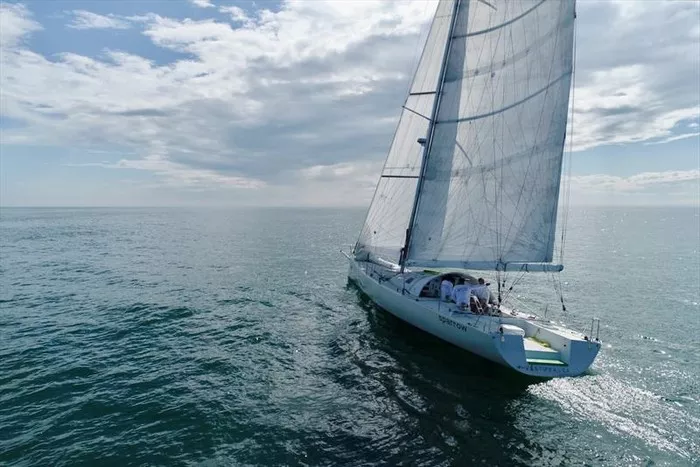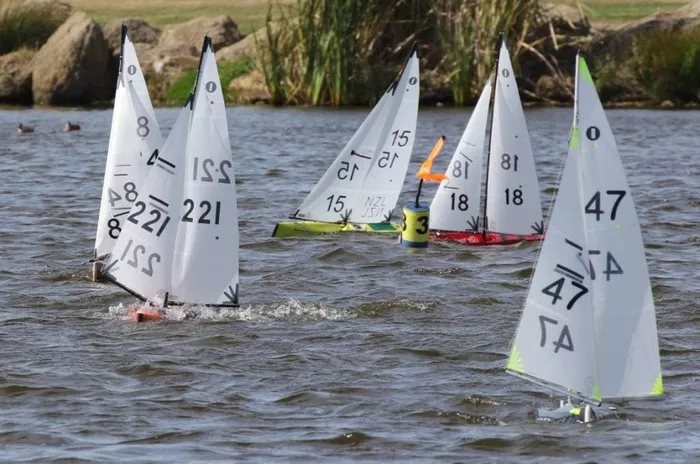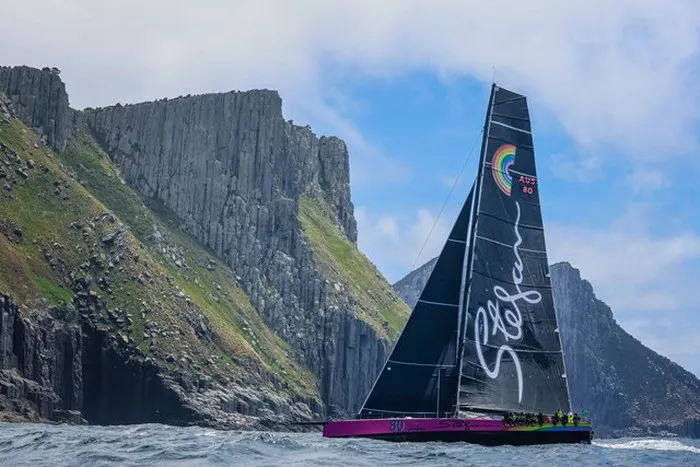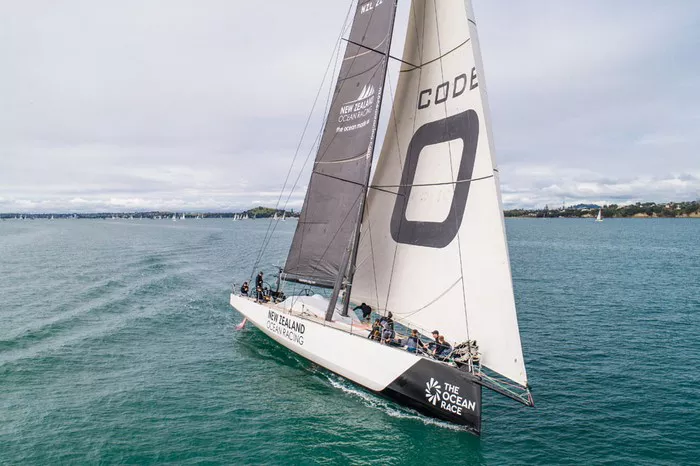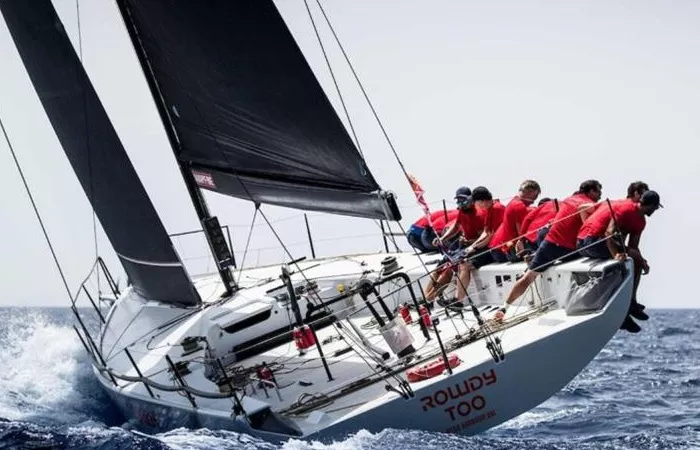A racing yacht is a high-performance sailboat designed for speed and agility in competitive sailing events. Built with lightweight materials, sleek hulls, and advanced rigging systems, it’s engineered for maximum efficiency in various wind conditions. Racing yachts prioritize speed, handling, and precision, often featuring cutting-edge technology for navigation and control.
Racing Yacht Types
Racing yachts come in various types, each designed for different racing formats, conditions, and courses. Here’s a breakdown of some of the most common types of racing yachts:
1. One-Design Yachts
These yachts are identical in design and specification, meaning every boat is built to the same standards. The primary purpose of one-design racing is to ensure that the competition is based purely on the skill of the crew rather than the boat’s design or modifications.
Example:
J/24: A popular one-design racing yacht known for its versatility and competitive nature.
Sonar: Used in events like the Paralympic Games, it is a classic one-design yacht used in team racing.
2. Offshore Racing Yachts
Offshore racing yachts are designed for long-distance races that can range from 24 hours to multiple days or even weeks. They must be robust, seaworthy, and capable of handling a variety of weather conditions, including heavy winds and waves.
Types:
Maxi Yachts: Large yachts typically over 70 feet in length, used in major offshore races like the Sydney to Hobart or the Rolex Fastnet Race.
Class 40: A class for 40-foot yachts, known for its balance between speed and durability.
Volvo Ocean 65: A standard yacht used in the Volvo Ocean Race, capable of long-distance offshore races.
3. Inshore Racing Yachts
Inshore racing yachts are designed for shorter, tactical races, typically lasting a few hours. These races are held on sheltered waters such as bays or lakes, and the boats are built for speed and maneuverability rather than endurance.
Types:
Melges 24: A fast, 24-foot monohull that’s highly popular in both inshore and international racing.
Etchells 22: A 22-foot keelboat that is widely used in short-course inshore racing, especially in prestigious events like the Etchells World Championship.
4. Multihulls (Catamarans & Trimarans)
Multihulls are racing yachts with two (catamarans) or three (trimarans) hulls. These boats are typically faster than monohulls and are built for speed and agility, especially in light winds.
Types:
GC32: A foiling catamaran used in the Extreme Sailing Series, a high-speed racing event.
AC75: The type of boat used in the America’s Cup, a revolutionary foiling catamaran designed for extreme performance.
F18 Catamaran: A competitive, high-performance class used for inshore catamaran racing.
5. Foiling Yachts
Foiling yachts use hydrofoils to lift the hull above the water at higher speeds, reducing drag and allowing the boat to travel faster than traditional monohulls or multihulls. These yachts are cutting-edge in terms of design and technology.
Types:
Moth Class: A small, single-handed dinghy that is known for its high-speed foiling capabilities.
America’s Cup Class: Modern America’s Cup boats use hydrofoils to achieve incredible speeds, particularly the AC75, which flies above the water.
6. Heavy Weather Racing Yachts
These yachts are designed specifically for racing in extreme conditions. They are built to handle strong winds, big waves, and often difficult seas.
Types:
Open 60: These are large monohulls used in solo or double-handed offshore races like the Vendée Globe, and they are designed to withstand some of the harshest conditions.
Imoca 60: Similar to Open 60, used in solo and long-distance races with a focus on safety and durability.
7. Cruiser-Racers
Cruiser-racers are yachts that blend the elements of cruising yachts with racing yachts. While they are fast and can compete in regattas, they also have the amenities for comfortable cruising.
Examples:
Beneteau First 40: A performance cruiser that’s popular in club racing, offering a good balance between racing and cruising.
X-Yachts X-35: A performance cruiser designed for competitive racing but also suitable for cruising purposes.
8. Speed Yachts
Speed yachts are all about top-end performance, designed for one thing: speed. These are often used in specialized races or speed trials.
Example:
Vestas Sailrocket 2: A record-breaking speed sailboat designed to break the world sailing speed record.
9. Mini Transat Yachts
The Mini Transat is a single-handed, solo race across the Atlantic, and the yachts used in this race are typically smaller (6.5 meters). These boats are designed for endurance and efficiency in long, solo voyages.
Example:
Mini 6.50 Class: A class of small racing yachts used in the Mini Transat, known for their resilience and agility.
10. Match Racing Yachts
Match racing involves two boats racing against each other, often in a head-to-head format with a focus on tactics, rules, and strategy. These yachts are typically smaller and highly maneuverable.
Example:
J/80: A small 8-meter yacht that is widely used in match racing, offering great maneuverability and balance.
Sonar: A 23-foot boat used for fleet and match racing, known for its tactical design and stability.
11. Keelboats
Keelboats have a permanent weighted keel to provide stability, and they are used in a wide range of racing disciplines. They vary in size, but they are generally more stable and faster in offshore and inshore racing.
Examples:
Bénéteau First 36.7: A popular performance cruiser that is also highly competitive in offshore racing.
J/109: A 35-foot yacht used for both inshore and offshore racing, especially in competitive club events.
These are just some of the main types of racing yachts, and there are variations within each type. Each yacht is designed with a specific race, course, or condition in mind, and the choices can range from one-design boats to high-tech, multi-million-dollar racing machines like those used in the America’s Cup. Whether you’re interested in offshore adventures, inshore tactical battles, or high-speed racing, there’s a yacht built for every kind of race.
Key Features of Racing Yacht
Racing yachts are designed for speed, performance, and agility, with various features that distinguish them from typical cruising yachts. Here’s a detailed list of the key features of racing yachts:
1. Hull Design
Lightweight Construction: Racing yachts use lightweight materials like carbon fiber, fiberglass, or composite materials. This reduces weight while maintaining strength and durability, crucial for speed.
Streamlined Shape: The hulls of racing yachts are designed to be as hydrodynamic as possible, minimizing resistance in the water and improving speed.
Narrow Beam: Racing yachts typically have a narrow beam (width) to reduce drag and increase stability at higher speeds.
Sharp Entries: The bow (front) of the yacht usually has a sharp entry to slice through waves and reduce drag.
2. Keel and Rudder
Deep Fin Keels: The keels on racing yachts are often deep and narrow to reduce leeway (sideways drift) and provide maximum lift.
Canting Keels: Some racing yachts have canting keels that can be adjusted sideways, which helps to balance the yacht and improve stability.
Rudder: Racing yachts usually feature a high-performance rudder with a more efficient shape for better maneuverability and control, especially at high speeds.
3. Sails
Large Sail Area: Racing yachts often have larger sail areas than cruising yachts. This provides more power to move the yacht forward but requires skilled crew members to handle.
Aerodynamic Sails: Racing yachts use high-tech sails made from lightweight materials such as Mylar or Kevlar. These sails are designed to maximize wind capture and reduce drag.
Adjustable Rigging: The rigging system, which supports the sails, is highly adjustable to optimize performance in varying wind conditions.
This includes adjustable backstays, forestays, and runners.
Headsails & Mainsails: Racing yachts use specialized headsails (like Genoas or Jibs) and mainsails to achieve better efficiency in different wind conditions.
4. Rigging and Mast
Tall Mast: The mast is typically taller on racing yachts to accommodate larger sails, allowing the boat to harness more wind power.
Fractional Rigging: Many modern racing yachts use a fractional rig (where the headsail is attached to the mast above the deck) for better control and more versatile sail configurations.
Carbon Fiber Masts: High-performance carbon fiber masts are used to reduce weight and increase stiffness, providing better sail control.
5. Weight Distribution and Ballast
Strategic Weight Placement: Racing yachts are designed with a carefully calculated weight distribution to ensure stability and prevent capsizing during high-speed maneuvers. Crew members are often positioned in specific areas to balance the yacht.
Ballast: Ballast (often in the form of lead or other dense materials) is placed low in the hull to lower the center of gravity and increase stability, particularly in heavy wind conditions.
6. Cockpit and Crew Positioning
Open Cockpit: Racing yachts typically have a large, open cockpit with minimal obstruction to reduce weight. The cockpit is often designed to allow the crew to shift weight as needed to maintain balance.
Helmsman Position: The helmsman (person steering the yacht) often has a position at the back of the boat with a clear line of sight, usually behind the wheel or tiller.
Crew Stations: Crew members are often spread out across the yacht and work together to handle different tasks, such as adjusting the sails or trimming lines. Their movement around the yacht is crucial for balancing weight and adjusting to changing conditions.
7. Advanced Technology
Electronic Instruments: Racing yachts are equipped with advanced instruments like GPS, wind speed sensors, and digital compasses to provide real-time data, allowing the crew to optimize their tactics and route.
Hydraulic Systems: Many racing yachts have hydraulic systems to make adjusting sails, trimming lines, or operating the canting keel easier and more efficient, allowing for quick and precise changes during a race.
Tactical Software: Modern racing yachts often use onboard software for navigation, weather prediction, and race strategy, helping the crew make informed decisions on the fly.
8. Deck Layout
Minimalistic Deck: The deck is often stripped down to reduce weight, with only essential equipment onboard. Lines and winches are arranged for efficient operation, often with multiple winches for various tasks.
Flush Decks: Racing yachts may have a flush deck (no raised structures) to reduce drag and make the boat easier to move around when tacking or jibing.
9. Racing-Specific Features
Bow Sprits: A bow sprit is a spar that extends forward from the bow to hold additional headsails (like asymmetrical spinnakers) for downwind sailing, providing extra speed.
Spinnakers: These large, lightweight sails are used for downwind racing. Their shape and materials are optimized for maximum efficiency when sailing with the wind behind the yacht.
Trimming and Sheet Systems: Racing yachts often have specialized lines and systems to adjust the sails’ shape, which is vital for maximizing performance at various wind speeds and angles.
10. Hull and Sail Shape Optimization
Tuned Hull Shape: Racing yachts often undergo specific hull modifications or adjustments to optimize them for particular races, water conditions, or weather scenarios.
Sail Shape Control: Racing yachts have complex sail trim systems to control the curvature (camber) of sails, optimizing them for the wind conditions and minimizing drag.
11. Maintenance and Durability
Regular Inspection and Repairs: Racing yachts undergo regular inspections and repairs to ensure that all systems, including sails, rigging, and hull, are in top condition for high-speed races.
Reinforced Areas: Certain high-stress areas on racing yachts, like the mast base and keel joint, are reinforced to withstand the intense forces experienced during races.
12. Safety Features
Automatic Bilge Pumps: Racing yachts are equipped with high-capacity bilge pumps to remove water that enters the hull, ensuring the yacht stays afloat even in rough conditions.
Lifelines and Harnesses: For safety during racing, yachts are often equipped with lifelines around the perimeter and harness points to keep crew members secure, especially during high-speed maneuvers.
13. Aerodynamic Considerations
Wind Shielding: Racing yachts often have minimal superstructure above the deck to allow for an unobstructed flow of air across the sails.
Wind Deflection Systems: Some boats incorporate systems that divert wind to improve the efficiency of sails or control the boat’s performance.
Racing yachts are designed for ultimate speed, efficiency, and agility. Every aspect of their design, from the hull to the sails to the rigging, is meticulously crafted for performance. The focus is on reducing weight, improving aerodynamics, maximizing sail area, and offering precise control, all while ensuring the boat’s stability and safety during high-speed races. These specialized features are key to ensuring that racing yachts can perform at their best in competitive sailing environments.

